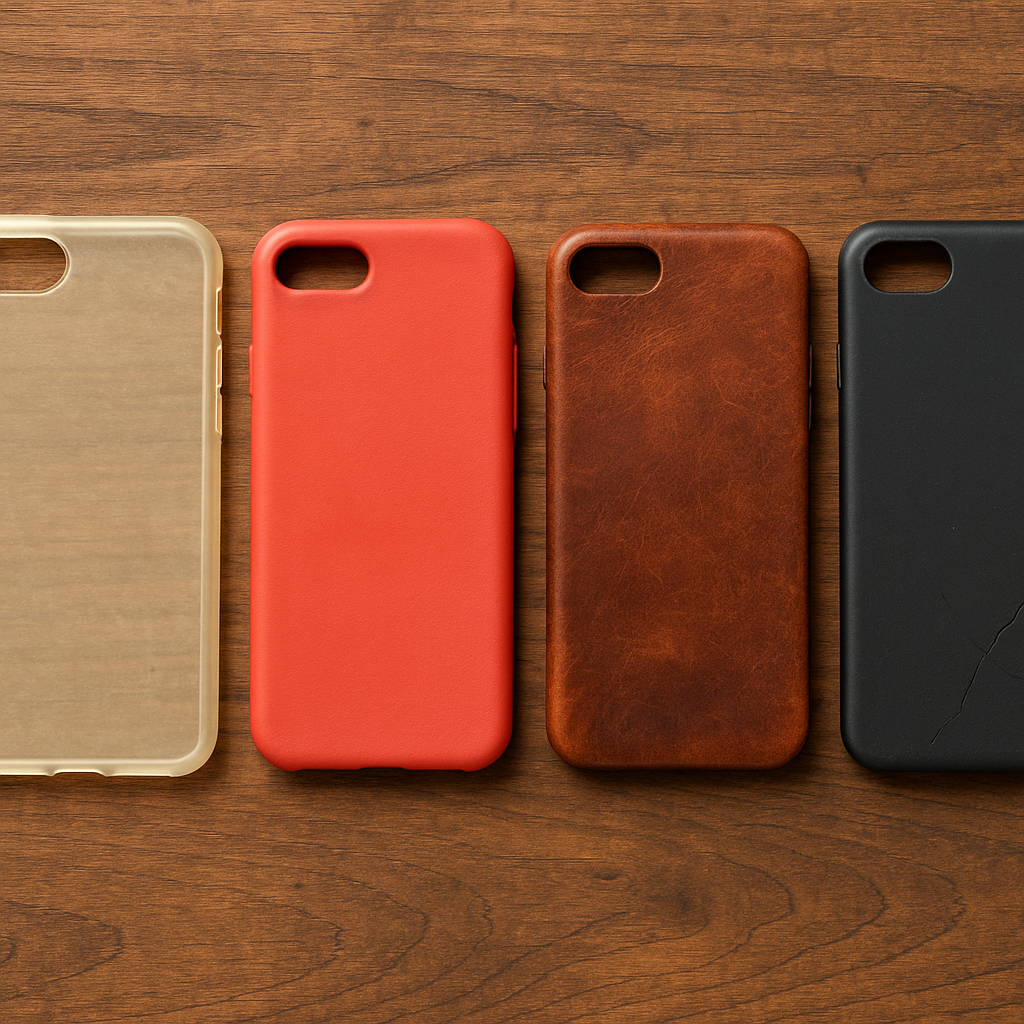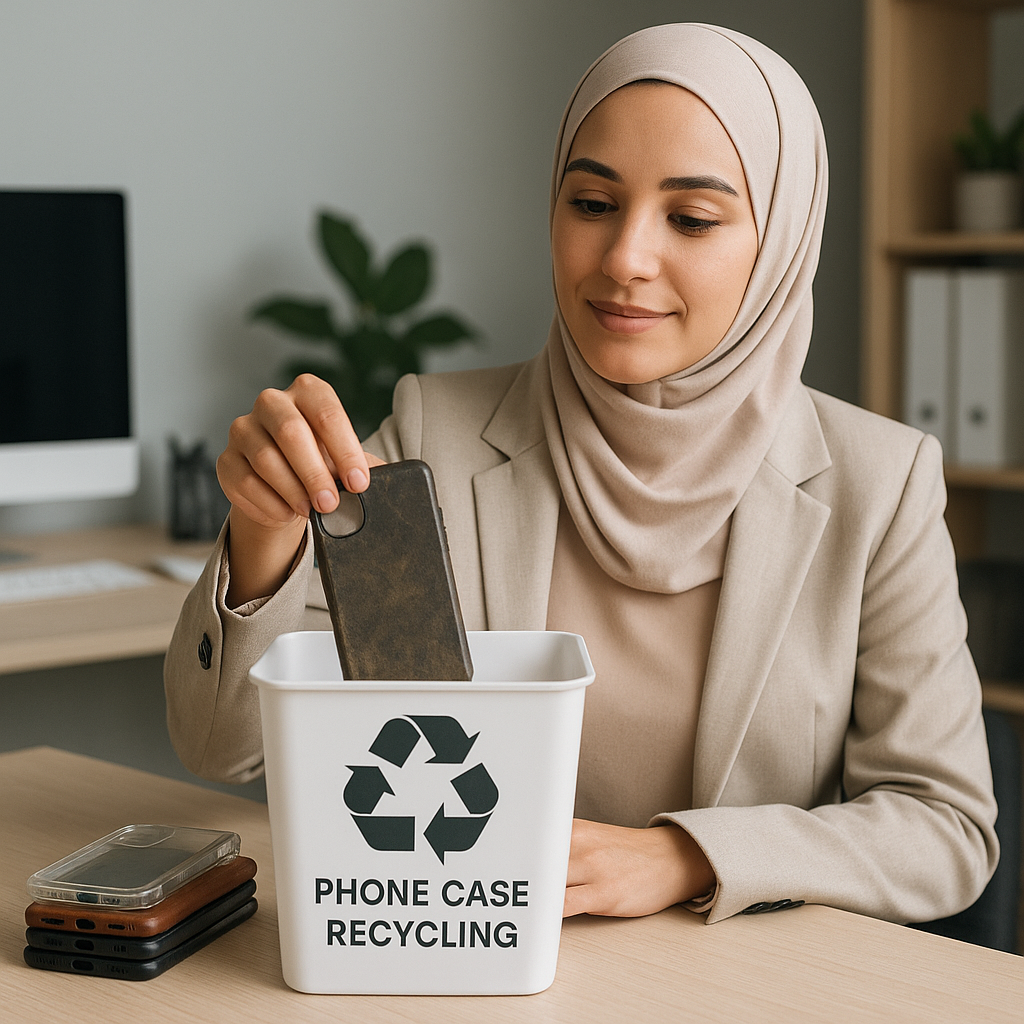How Often Should You Replace Your Phone Case?
Our smartphones are significant investments that we carry everywhere, and phone cases serve as the first line of defense against drops, scratches, and daily wear. Beyond protection, they also express our personal style. But like all accessories, phone cases don't last forever—they deteriorate over time and eventually need replacement. Whether you're using a sleek silicone sleeve, a rugged protective shell, or an elegant leather cover, understanding when to retire your current case can save your device from unexpected damage and keep it looking fresh. For a broader comparison of types, see our guide to phone case types.
In this article, we'll explore the typical lifespan of different phone case materials, identify clear signs that signal replacement time, and provide practical advice on extending your case's usefulness. We'll also discuss why regular replacement matters for both device safety and personal hygiene.
What determines your phone case's lifespan?
Several factors influence how long your phone case will remain effective, including material quality, daily usage patterns, and environmental exposure.
Different materials offer varying levels of durability and protection. Silicone and TPU (thermoplastic polyurethane) cases typically last 1-2 years before showing significant wear. These flexible materials can stretch over time, losing their snug fit. Hard plastic cases also generally last 1-2 years but may develop cracks or chips sooner if frequently dropped.
Premium leather cases often boast the longest lifespans, ranging from 2-4 years with proper care, developing a unique patina rather than wearing out.
Eco-friendly or plant-based cases vary widely in durability—some match conventional materials, while others might degrade faster by design. Clear cases face a particular challenge: they commonly yellow over time due to UV exposure and oils from hands, often requiring replacement within 6-12 months to maintain their transparent appeal.
Your lifestyle significantly impacts case longevity. Active individuals who frequently take their phones outdoors or to gyms will notice faster deterioration than office workers who mostly keep devices on desks. Environmental factors like humidity, extreme temperatures, and sunlight exposure accelerate degradation of most case materials.
Manufacturing quality makes a substantial difference too. Premium cases with reinforced corners, precise cutouts, and higher-grade materials naturally outlast budget alternatives. For tough protection that stands the test of time, browse our selection of tough phone cases.
Signs it's time to replace your phone case
Regular inspection of your phone case can prevent unexpected device damage and ensure optimal protection.
- Visible cracks or breaks - Even small fractures compromise structural integrity and protection capabilities. A cracked corner might seem minor until it fails to absorb impact during a drop.
- Loose fit - When your case no longer snaps securely onto your device or slides off easily, it's no longer providing reliable protection. This loosening happens gradually as materials stretch or warp.
- Discoloration and staining - Clear cases turning yellow or developing permanent stains not only look unappealing but indicate material breakdown at the chemical level.
- Peeling or warping - Separation of layers in multi-material cases or distortion of shape means the structural integrity is compromised.
- Reduced grip - When textured surfaces wear smooth or silicone becomes slippery, your case has lost one of its primary functions.
- Button or feature malfunctions - Stiff buttons, torn port covers, or broken kickstands indicate advanced wear.
- Outdated style or design - Sometimes the protection remains adequate, but style preferences change.
Most people overlook subtle changes until they become obvious problems. For instance, a gradually yellowing clear cover may not be noticeable day-to-day until compared to a brand new case. Similarly, the fit might deteriorate so slowly that you don't realize how loose it's become until your device slips out unexpectedly. To see how phone cases differ in functionality and protection, explore our phone case types overview.
Why regularly changing your phone case matters
Replacing your phone cover extends beyond mere aesthetics—it directly impacts device protection and personal hygiene.
Phone cases harbor surprising amounts of bacteria and microorganisms. The warm, enclosed environment between your device and its cover creates ideal conditions for microbial growth. Studies show smartphone accessories can carry more bacteria than toilet seats. Fresh covers eliminate these accumulated contaminants, especially important considering how often we touch our faces after handling phones.
Protection capability diminishes as materials age. Microscopic damage from previous impacts weakens the structural integrity of cases, making them less effective at absorbing future shocks. Even if your device hasn't experienced a major drop, the daily micro-impacts gradually compromise protective features.
Technological compatibility presents another compelling reason for regular replacement. Newer phones incorporate features like MagSafe charging, improved camera arrays, or different button placements that older cases weren't designed to accommodate. An outdated case might block wireless charging efficiency or interfere with camera performance.
Environmental responsibility should factor into replacement decisions too. Instead of discarding old cases that contribute to plastic waste, consider eco-friendly alternatives made from biodegradable materials, recycled plastics, or sustainable resources like bamboo or flax. Many manufacturers now offer recycling programs for old phone accessories, reducing landfill impact.
Looking for a new phone case that's sustainable? Check out our latest collection of phone cases.
How to extend the life of your phone case
Proper maintenance can significantly prolong your cover's usefulness, saving money and reducing waste.
Regular cleaning prevents buildup of dirt and oils that degrade materials over time.
Different cover types require specific cleaning approaches. For silicone and TPU protectors, mild soap and water work well—simply remove the cover from your device, wash gently, and dry thoroughly before reattaching. Leather covers benefit from specialized leather cleaners and occasional conditioning to prevent cracking. Avoid harsh chemicals like bleach or alcohol on any cover type, as these can break down protective coatings and accelerate deterioration.
Limit environmental exposure whenever possible. Extreme heat—like leaving your protected device in a hot car—can warp plastic components or deform silicone. Prolonged UV exposure accelerates yellowing in clear shields and breaks down many synthetic materials. For water-resistant options, rinse after exposure to chlorinated pool water or salt water at beaches, as these substances can be particularly damaging.
Proper installation and removal techniques prevent unnecessary strain. Always remove your protector by starting at the corners rather than peeling from the middle, which can stretch or crack the material. When installing, secure corners first and work your way around rather than forcing it on.
Consider using screen protectors alongside your cover to create a more comprehensive defense system. The additional layer reduces stress on case edges during face-down drops. Interested in both case and screen protection? Discover our screen protectors.
Choosing your next phone case: what to consider
When the time comes for replacement, selecting the right successor requires thoughtful evaluation of several factors.
Precise fit ranks as the most critical consideration—even slightly imprecise dimensions can compromise protection and functionality. Always confirm compatibility with your specific device model, not just the brand series. Protection level should match your lifestyle; active users need reinforced corners and raised edges, while occasional users might prioritize slimness.
Material selection affects both durability and user experience. Silicone provides excellent grip but attracts lint; hard polycarbonate resists scratches but offers less shock absorption; leather delivers premium feel but requires maintenance. Consider which aspects matter most for your usage patterns.
Feature compatibility extends beyond basic dimensions. Verify that wireless charging, card storage, or specialized functions like camera lens protection work with your specific device. Many users discover compatibility issues only after purchase.
Sustainability deserves consideration in today's environmentally conscious marketplace. Biodegradable options, cases made from recycled materials, and products from companies with take-back programs reduce environmental impact without sacrificing protection.
User reviews provide valuable insights beyond manufacturer claims. Look for comments about long-term durability, how the cover ages, and whether it maintains its protective qualities over time. This real-world feedback often reveals strengths and weaknesses not apparent from product descriptions.
Conclusion
Maintaining optimal protection for your smartphone requires periodic evaluation of your case's condition. Most users should anticipate replacing their phone protection every 12-24 months, depending on material quality, usage patterns, and visible wear signs. Clear cases typically require more frequent replacement due to yellowing, while premium leather options might last several years with proper care.
Regular inspection for cracks, loose fit, discoloration, and reduced functionality ensures you'll catch deterioration before it compromises device safety. Proper maintenance—including appropriate cleaning methods and mindful usage—can extend your case's useful life significantly.
Remember that beyond physical protection, regular replacement addresses hygiene concerns by eliminating bacterial buildup. When selecting a replacement, consider not just appearance but compatibility with current technology, material durability, and environmental impact.
By approaching phone case replacement strategically rather than reactively, you'll maintain better protection for your device investment while potentially exploring new styles and features that enhance your smartphone experience.
Frequently Asked Questions
How often should I really replace my phone case?
Generally, every 12–24 months or sooner if showing visible damage, poor fit, or functional issues.
What are the main signs I need a new phone case?
Look for cracks, color changes, a loose fit, warped materials, or reduced protection after drops.
Are eco-friendly phone cases as durable as regular cases?
Quality eco-friendly cases can match traditional durability, though lifespans may vary—review product details and warranty.
Does replacing my phone case really improve hygiene?
Yes, fresh cases reduce buildup of germs and bacteria, especially with regular device handling.
Can I recycle my old phone case?
Some cases can be recycled or composted; check for recycling programs or responsible disposal opportunities.



























